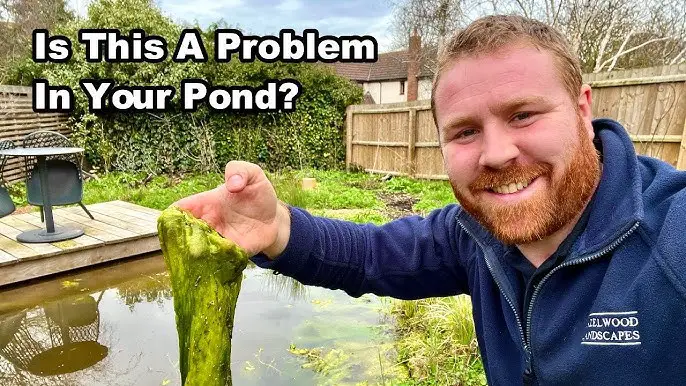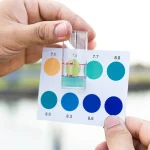Algae can be a common problem in ponds, causing water to turn green and impacting the overall health of aquatic life. While there are chemical treatments available to combat algae, many pond owners prefer natural methods to maintain a healthy and balanced ecosystem. In this article, we will explore various ways to get rid of algae in a pond naturally.
1. Increase Oxygen Levels
One effective way to control algae growth in a pond is by increasing oxygen levels in the water. Algae thrive in stagnant water with low oxygen levels, so introducing aeration systems such as fountains or aerators can help disrupt algae growth.

Credit: www.youtube.com
2. Add Floating Plants
Floating plants like water lilies and water hyacinths can provide shade and compete with algae for nutrients, helping to reduce algae blooms. These plants also help in oxygenating the water and maintaining a balanced ecosystem.

Credit: www.wikihow.com
3. Introduce Beneficial Bacteria
Beneficial bacteria products are available that can help break down organic matter in the pond, reducing the nutrients that algae feed on. These bacteria are safe for fish and other aquatic life and can be a natural way to control algae growth.
4. Barley Straw
Barley straw is a natural and effective way to control algae in ponds. When barley straw decomposes in water, it releases compounds that inhibit algae growth. Simply place barley straw bundles in your pond to help prevent algae blooms.
5. Maintain Balance
Keeping a balanced ecosystem in your pond is crucial for preventing algae overgrowth. Avoid overfeeding fish, as uneaten food can contribute to algae growth. Regularly clean debris from the pond and monitor nutrient levels to ensure a healthy environment for aquatic life.
6. Use Natural Algaecides
There are natural algaecides available that use ingredients like hydrogen peroxide or enzymes to control algae growth. These products are safe for fish and plants and can be an effective way to combat algae without harming the ecosystem.
7. Proper Filtration
Installing a proper filtration system in your pond can help remove excess nutrients and debris that contribute to algae growth. Make sure to clean and maintain the filter regularly to ensure optimal performance.
8. Control Sunlight Exposure
Excessive sunlight can promote algae growth in ponds. Planting trees or installing shading structures near the pond can help reduce sunlight exposure, limiting the conditions that favor algae blooms.
9. Regular Water Testing
Regularly testing the water in your pond can help you monitor nutrient levels and pH, allowing you to take timely action to prevent algae outbreaks. Adjusting nutrient levels and pH as needed can help maintain a healthy pond environment.
10. Implement a Beneficial Planting Strategy
Strategic planting of aquatic plants can help absorb excess nutrients and compete with algae for resources. Consider adding plants like water lilies, water lettuce, or submerged plants to help maintain water quality and reduce algae growth.
Conclusion
Algae growth in ponds can be a common issue, but by implementing natural methods, pond owners can effectively control algae blooms and maintain a healthy aquatic environment. From increasing oxygen levels to introducing beneficial bacteria and using natural algaecides, there are various ways to combat algae naturally. By following these tips and maintaining a balanced ecosystem, you can enjoy a beautiful and thriving pond for years to come.




